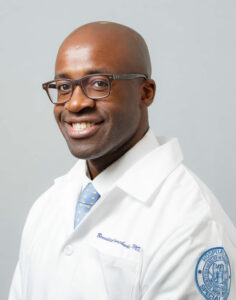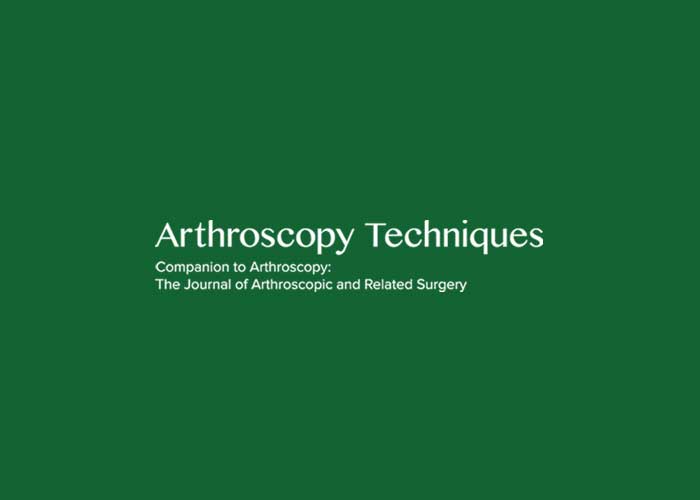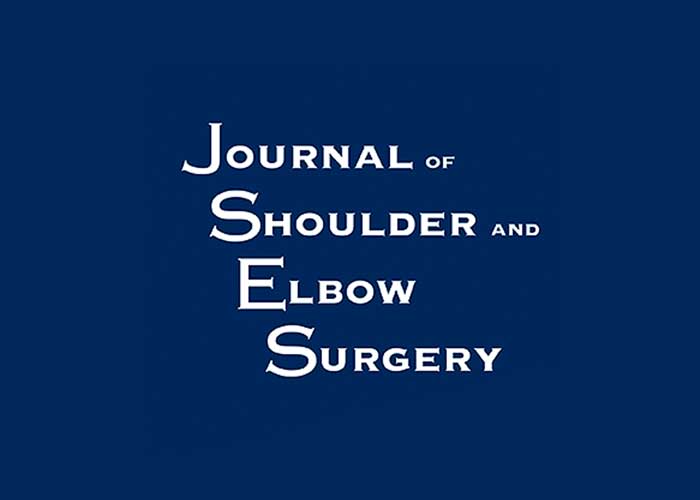Arthroscopic Rotator Cuff Surgeon

Are you an athlete who participates in sports that involve throwing overhead? If so, you may be at risk of developing a rotator cuff injury. The rotator cuff can become damaged from repetitive overuse, a sports injury, a fall or degeneration of one of the tendons. Rotator cuff surgeon, Doctor Benedict Nwachukwu provides diagnosis as well as surgical and nonsurgical treatment options for patients in Manhattan, New York City, NY who have sustained a rotator cuff injury. Contact Dr. Nwachukwu’s team today!
What is the rotator cuff?
The rotator cuff is a system of tendons and muscles located within the shoulder joint that give the shoulder stability and an incredible range of motion. The grouping of these muscles come together as tendons and insert on the ball of the humerus (upper arm bone) and hold the ball firmly within the glenoid (shallow socket) of the scapula (shoulder blade). The rotator cuff’s job is to provide rotation and strength to the arm, allowing it to move, lift and turn while remaining stable within the joint. An injury to the rotator cuff can range from mild inflammation of the tendon to a partial or complete tear. Dr. Benedict Nwachukwu, orthopedic shoulder surgeon, serving Manhattan, New York City and the surrounding New York boroughs offers a treatment for rotator cuff injuries called arthroscopic rotator cuff repair.
What is arthroscopic rotator cuff repair?
When a muscle attaches to a bone, it is called a tendon and the area that it attaches to is called the insertion point. Muscles move the bones by pulling on the tendons. If one of these tendon insertion points becomes damaged, or if the tendon tears away from the bone, it is called a tear or a rupture. If a tear occurs at the rotator cuff insertion point, it is unable to repair itself and Dr. Nwachukwu may recommend a procedure called arthroscopic rotator cuff repair.
Arthroscopic rotator cuff repair, also called minimally invasive surgery or “keyhole” surgery is the preferred method of treating a partial or complete tear of a tendon within the rotator cuff. During this procedure, Dr. Nwachukwu utilizes a small camera called an arthroscope which is placed inside a small incision in the shoulder. Small, thin surgical instruments are also used to repair the torn rotator cuff tissues inside the shoulder joint. Arthroscopic rotator cuff repair is less invasive and reduces the risk of post-operative complications such as muscle stiffness, muscle injury and infection.
How is a rotator cuff repaired?
Arthroscopic rotator cuff repair surgery involves reattaching the torn tendon to the head of the humerus (upper arm bone). Partial tears of the rotator cuff may only need a trimming or smoothing procedure called debridement. Complete rotator cuff tears are repaired by suturing the tendon back to the original attachment site on the humerus. Dr. Nwachukwu uses special surgical anchors, secured within the bone and attached to sutures that are used to sew the torn tendons back down to the bone. The placement of these tendons when being sewn back to the bone is vital to proper healing and Dr. Nwachukwu has extensive experience in restoring the tendon to its correct anatomical position. Some of the techniques he may use to achieve this are:
- Single row arthroscopic rotator cuff repair – In this surgical technique, a single row of sutures is all that is needed to anchor the tendon back to the bone. The term “single row” refers to the way the torn rotator cuff tendon is repaired during surgery.
- Double row arthroscopic rotator cuff repair – This new, innovative technique is used for more severe rotator cuff tears, or when extra stability is needed. Double row repair accomplishes the goal of restoring the natural anatomy of the torn tendon as it attaches to the proximal humerus. Studies have shown that double row sutures result in significantly less re-tear rates when there is new stress introduced to the repaired tendon.
- Superior Capsular Reconstruction – This surgical procedure is reserved for massive rotator cuff tears that are unable to be repaired. The torn tendons, specifically the supraspinatus and infraspinatus (together called the posterosuperior tendons) are the most common area for a full-thickness rotator cuff tear. This surgery requires superior arthroscopic skills to sew in a new graft of tissue which replaces the torn rotator cuff tendon that could not be repaired.
How long does arthroscopic rotator cuff surgery take?
Dr. Nwachukwu will have a good indication of the type of tear and the severity after his diagnosis and MRI or CT scans. The time it takes will be based on extent of the rotator cuff tear, the complexity of the injury, and any other repairs that need to be done.
What should I expect after an arthroscopic rotator cuff repair?
Like the surgery to repair a rotator cuff injury, the recovery process will also vary. Patients in the New York area can expect the following after an arthroscopic repair:
- A sling is placed directly after surgery to immobilize the arm and to protect the healing tendon.
- Passive range of motion exercises (when someone other than the patient moves the arm) will begin the day after surgery to establish movement and maintain range of motion. Passive exercises will continue for 3 to 6 weeks.
- Active range of motion exercises (done by the patient) can begin after proper healing and usually around 6 weeks.
- Physical therapy and strengthening exercises begin between 8 and 12 weeks.
- Full recovery from an arthroscopic rotator cuff repair is achieved between 3 to 6 months depending on the size and type of repair. Shoulder strength and motion will continue to improve for a year or more after a successful repair.
For additional resources on arthroscopic rotator cuff repair, please contact the office of Benedict Nwachukwu, MD, orthopedic shoulder surgeon serving Manhattan, New York City and surrounding New York boroughs.







